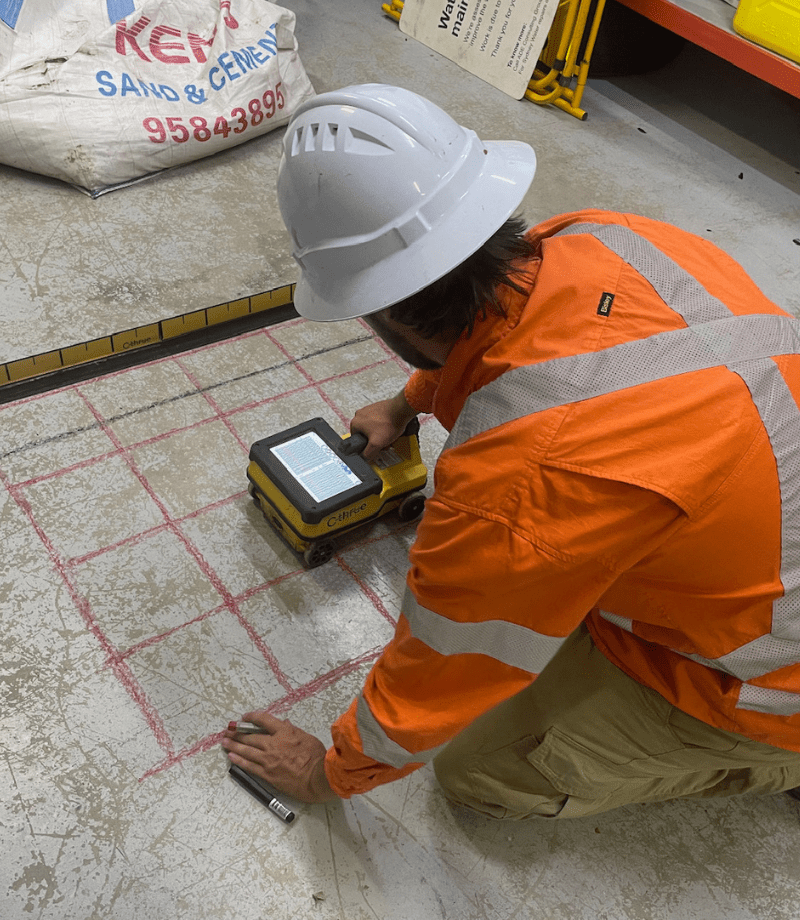The Importance of Specialist Concrete Scanning Services
The Importance of Specialist Concrete Scanning Services
Blog Article
Introduce the Transformative Power of Concrete Scanning in Making The Most Of Performance and Safety
Concrete scanning has become a crucial tool in the building and construction industry, providing unequaled advantages in enhancing project effectiveness and making sure safety and security standards. By utilizing sophisticated innovation, concrete scanning permits professionals to see past the surface area, revealing surprise intricacies that can impact the structural integrity of a building. The transformative power of concrete scanning depends on its ability to give comprehensive insights and real-time data, reinventing exactly how jobs are prepared and carried out. As we look into the intricacies of this innovative technique, a world of possibilities opens, showcasing a new period of building and construction techniques that focus on accuracy and safety.
Relevance of Concrete Scanning
Making sure the structural stability and safety of building tasks begins with the vital step of carrying out complete concrete scanning. Concrete scanning is a non-destructive method used to spot and map subsurface aspects within concrete frameworks.
Additionally, concrete scanning helps in optimizing job timelines and spending plan by preventing unexpected costs and hold-ups that might emerge due to unpredicted blockages within the concrete. Inevitably, spending in detailed concrete scanning is an aggressive strategy that boosts both performance and safety and security in building and construction projects.
Just How Concrete Scanning Functions
Concrete scanning runs as a critical device in building and construction jobs by utilizing advanced technologies to detect and map subsurface elements without creating architectural damage. Ground Penetrating Radar (GPR) and Electromagnetic Induction (EMI) are 2 key techniques used in concrete scanning. GPR jobs by emitting high-frequency radar pulses into the surface, which jump back when they experience subsurface items or voids. The moment considered the signal to return indicates the deepness and place of the objects. EMI, on the various other hand, utilizes magnetic fields to identify differences in product compositions, such as identifying rebar or avenues within concrete structures.
During the scanning procedure, the information collected is examined in real-time, permitting immediate identification of possible threats or obstacles underneath the surface area. By using these advanced innovations, concrete scanning dramatically reduces the danger of expensive problems and injuries on building websites.
Advantages of Concrete Scanning
One of the key benefits of concrete scanning is the ability to find and find embedded items such as rebar, post-tension wires, and channels precisely. Concrete scanning helps in preparation and creating much more effectively, as it gives exact information concerning the place and depth of architectural elements.

Study: Concrete Scanning Success

In an additional case, a building business used 3D concrete scanning to analyze the problem of aging concrete structures in a historic building. The thorough scans supplied useful understandings right into the extent of wear and tear and helped prioritize maintenance efforts effectively. By proactively attending to locations of worry recognized through scanning, the firm had the ability to expand the life-span of the framework and make certain owner safety.
These case Get More Information studies underscore the transformative power of concrete scanning in boosting performance, precision, and safety and security in building and construction tasks.
Applying Concrete Scanning in Projects
Applying innovative scanning innovations during building projects has come to be significantly crucial for boosting precision and safety and security. By incorporating concrete scanning right into task preparation and execution, building teams can identify potential hazards, such as rebar or post-tension cables, concealed within concrete frameworks. This proactive approach decreases the threat of mishaps, delays, and costly rework, inevitably causing much more efficient task timelines and budget plans.
To execute concrete scanning effectively, task supervisors ought to team up carefully with skilled scanning professionals to establish the most suitable scanning methods for the particular task demands. Engaging scanning specialists from the onset of a job enables the group to create detailed scanning plans that resolve essential locations of worry and ensure detailed information collection.
Additionally, integrating concrete scanning into routine project process can streamline decision-making procedures, as real-time check data gives immediate understandings right into the problem of concrete frameworks - Concrete Scanning. This data-driven method promotes informed analytical and enables teams to make changes quickly, promoting a culture of effectiveness and safety and security throughout the project lifecycle

Conclusion
To conclude, concrete scanning plays an essential function in enhancing effectiveness and safety in building projects. By using advanced innovation to map and find you can try this out out underlying structures within concrete, this process aids to stop pricey mistakes, make sure structural stability, and decrease risks on website. With the capacity to uncover concealed components and offer exact information, concrete scanning confirms to be a beneficial tool for optimizing job results and making best use of overall success.
Concrete scanning is a non-destructive technique made use of to spot and map subsurface aspects within concrete frameworks. Additionally, concrete scanning helps in enhancing task timelines and budget by avoiding unforeseen expenses and hold-ups that may emerge due to unexpected blockages click now within the concrete. One noteworthy situation research study entails a large renovation project where concrete scanning played a vital duty in making certain task success.In another case, a construction business used 3D concrete scanning to examine the problem of maturing concrete structures in a historic building. By integrating concrete scanning into job planning and execution, building teams can determine prospective risks, such as rebar or post-tension cable televisions, hidden within concrete structures.
Report this page